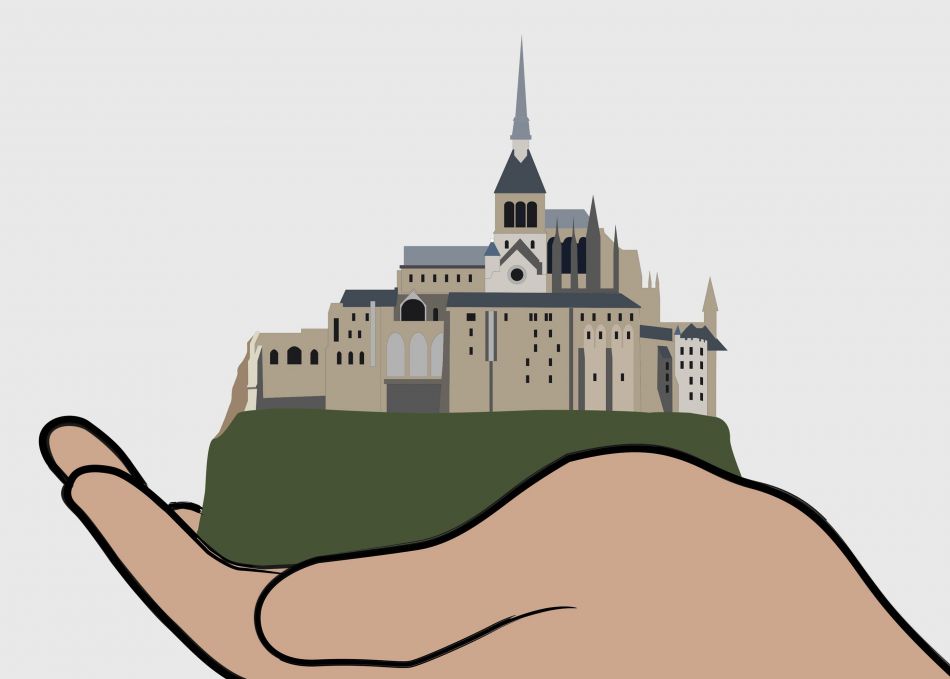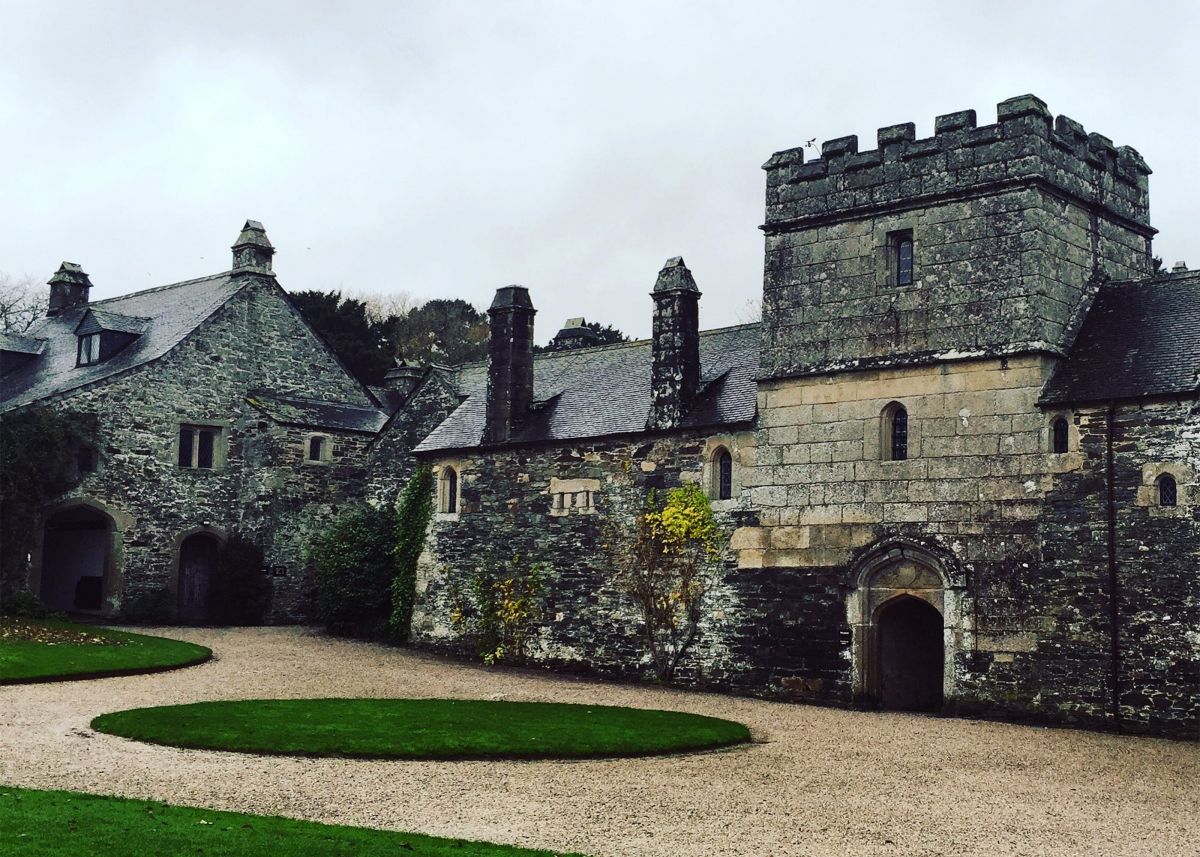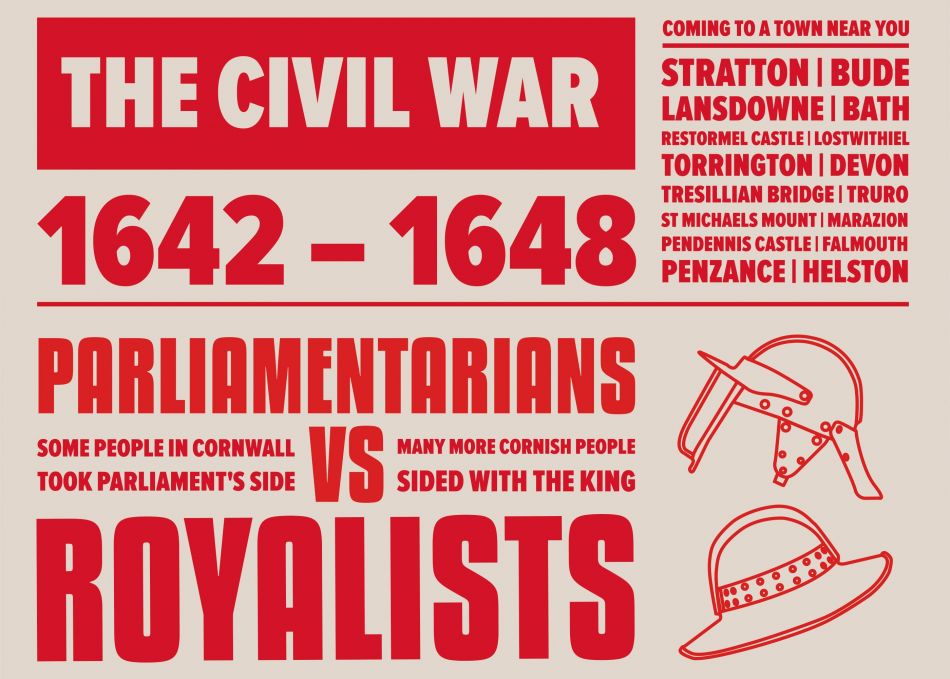Reasons for the war
King Charles I believed that he had a right to govern Britain without the help of a parliament. Between 1629 and 1640, the king did not summon (bring together) Parliament. However, Charles needed to raise money to help him rule, and without Parliament this was very difficult to get.
King Charles’ attempts to raise money without summoning Parliament caused a lot of anger in England. His religious changes also angered people in Scotland. Relations between the king and Parliament grew worse until war broke out in August 1642.
Why did Cornwall support the king?
The Duchy of Cornwall and Cornwall’s Stannary Parliament were strongly connected with the royal family. They gave Cornwall a sense of independence, which was threatened by Parliament. In fact, during the Civil War, the Parliamentarian army set fire to the Duchy Palace and burnt the records of the Duchy of Cornwall and the Cornish Stannary Parliament.
Also, Cornish people were conservative – which meant that they did not like change. Although they were no longer Catholic, the Cornish still enjoyed parish feasts and cared for their holy wells and crosses. Many of Parliament’s supporters were strongly Protestant and disliked feasts, wells and crosses. During the Civil War, Parliament made celebrating feasts and erecting maypoles illegal. Parliamentarian soldiers also vandalised Madron’s holy well and some Cornish churches.
The Parliamentarians had a strong English identity. People in Cornwall saw this as a threat to their own Cornish culture and identity.
In this church the effects of their brutality are still to be seen; the timber that supports the roof is in many places burnt. The tower upon the western side is much shattered by the cannon from Stamford Hill Reverend Anthony Moore writing in 1753 about the damage done to Stratton Church by Parliamentarian soldiers
Divided families
Most of Cornwall’s leading families supported King Charles. These included the families of Basset, Coryton, Courtenay, Edgcumbe, Grenville, Rashleigh, Trelawny, Tremaine, Trevanion and Vivian. Members of these families were given the rank of colonel, major or captain in the Cornish Royalist army. However, some Cornish families such as Arundell, Carew, Godolphin and St Aubyn were divided, with some members supporting King Charles and other members supporting Parliament.

1642
22nd August: War breaks out
Disagreements between King Charles I and Parliament led to the outbreak of the Civil War. Some people in Cornwall took Parliament’s side, but many more Cornish people sided with the king.
1643
19th January: Battle of Braddock Down
Early in 1643 a battle was fought at Braddock Down, near Liskeard. A brave charge led by Cornish Royalist Sir Bevil Grenville made the Parliamentarians flee the battlefield. Two hundred Parliamentarians were killed, 1,250 were taken prisoner and two large cannon were captured by the Royalists. Only two Royalist soldiers died in the battle.
22nd January: Saltash captured
The Cornish Royalist army captured Saltash from the Parliamentarians and forced them to cross the Tamar into England.
8th February: Colonel Sidney Godolphin killed
During a fight between the Cornish Royalists and Parliamentarians in Chagford, Devon, Colonel Sidney Godolphin of the Cornish army was shot dead.
16th May: Battle of Stratton
Parliamentarian troops once again invaded Cornwall and camped on a hill at Stratton, near Bude. The Cornish Royalist army attacked them from four directions, pushing up the hill. The battle lasted all day. Although outnumbered, the Royalists won and forced the Parliamentarians over the border into Devon.
18th May - Dearest Soul, praise God everlastingly…Ring out your bells. Raise bonfires. We march to meet our victorious friends and to seize all the rebels left if we can find such living. Sir Francis Basset to his wife Anne following the Royalist victory at Stratton
5th July: Battle of Lansdowne
The Cornish Royalist army left Cornwall to fight the Parliamentarians at Lansdowne, near Bath in Somerset. The Royalists once again had to fight uphill to attack the Parliamentarians. The battle was long and very bloody, with many Cornish soldiers killed. Sir Bevil Grenville was injured in the battle and later died from his injuries.
When I came to the top of the hill, I saw Sir Bevil Grenville’s stand of pikes, which certainly preserved our army from a fatal rout with the loss of his most precious life…the air was so darkened by the smoke of the powder, that for a quarter of an hour together there was no light seen but what the fire of the volleys of shot gave Richard Atkyns writing about the death of Sir Bevil Grenville
26th July: The storming of Bristol
The Cornish Royalist army stormed and captured the city of Bristol. It was a great victory for the Cornish but their colonels John Trevanion and Sir Nicholas Slanning were killed during the fighting.
7th September: Exeter captured
The city of Exeter surrendered to the Cornish Royalist army.
10th September: King Charles’ letter of congratulations
The king sent a letter thanking the Cornish for their support and for fighting for him. The letter was placed in every church and chapel in Cornwall. Some churches in Cornwall still display the letter today.
We are so highly sensible of the extraordinary merit of Our County of Cornwall, of their zeale for the Defence of Our Person, and the just Rights of Our Crown, of their great and eminent Courage and Patience King Charles I’s letter to the Cornish (September 1643)
5th October: Dartmouth captured
The town of Dartmouth in Devon surrendered to the Cornish Royalist army.
1644
13th August-22nd September: Battle of Lostwithiel
Parliamentarian troops entered Cornwall and captured Restormel Castle, near Lostwithiel. The Cornish Royalists, led by Sir Richard Grenville, attacked the castle and forced the Parliamentarians to retreat. Six thousand Parliamentary soldiers surrendered. Local people attacked them as they left Cornwall. This was the biggest defeat suffered by the Parliamentarian army in the entire Civil War.

September: Siege of Plymouth
Sir Richard Grenville was put in command of the siege of Plymouth (surrounding Plymouth with soldiers). Plymouth supported the Parliamentarians but Sir Richard’s Cornish troops tried to make its people surrender.
November: The Duke stayed in Cornwall
Prince Charles, Duke of Cornwall (later Charles II), was appointed Commander in Chief of the Royalist army. He spent most of 1645 in Cornwall.
December: Britain’s first professional soldiers
Sir Richard Grenville created four new regiments (groups) of Cornish soldiers called the “New Cornish Tertia”. They were Britain’s first professional soldiers.
1645
2nd April: Siege of Taunton
Sir Richard Grenville was injured during the siege of Taunton in Somerset. Many Cornish troops left Taunton to go back home. They did not like fighting alongside Royalist troops from England, or fighting outside of Cornwall.
10th July: Battle of Langport
The Cornish Royalist army took part in a battle in Langport, Somerset. The battle was a victory for the Parliamentarians. The Royalists were starting to lose the war.
27th November: Cornish independence plan
Sir Richard Grenville wrote to Prince Charles suggesting that Cornwall should become independent and withdraw from the war. The prince did not accept the plan.
1646
16th February: Battle of Torrington
The Cornish Royalist army moved from Stratton to Torrington in north Devon. The Parliamentarians entered Torrington and heavy fighting began. A spark exploded gunpowder being stored in Torrington Church, killing over 100 Royalist prisoners held there.
5th March: Treaty at Millbrook
Cornish Royalist leaders realised that they were losing the war and surrendered the east of Cornwall to the Parliamentarians at Millbrook.
15th March: Surrender at Tresillian Bridge
The commander of the Cornish Royalists, Sir Ralph Hopton, surrendered the rest of Cornwall to the Parliamentarians at Tresillian Bridge, near Truro.
23rd April: Surrender of St Michael’s Mount
Some Cornish Royalists refused to surrender their castles. Brothers Sir Francis and Sir Arthur Basset did not surrender St Michael’s Mount to the Parliamentarians until April 1646.

Illustration by Harry Fisher
17th August: Surrender of Pendennis Castle
Colonel John Arundell refused to surrender Pendennis Castle at Falmouth until August 1646. This was one of the last castles held for King Charles to surrender during the Civil War.
18th March – Sir, The Castle was committed to my government by His Majesty, who by our laws has the command of the castles and forts of this Kingdom...I resolve that I will here bury myself before I deliver up this castle to such a fight against His Majesty Colonel John Arundell to Sir Thomas Fairfax of the Parliamentarian army (1646)
1648
16th-24th May: The Gear Rout
Although Cornwall’s Royalists had surrendered, risings took place at Penzance and Gear, near Helston, in 1648. The Parliamentarians defeated both risings. To show that Cornish resistance had been crushed, Parliamentarian soldiers marched through Penryn with Cornish hurling balls stuck on the ends of their swords.
1651
23rd May: Surrender of the Isles of Scilly
Possession of the Isles of Scilly had changed during the Civil War. By 1648, the Royalist army had control and Sir John Grenville (the son of Sir Bevil Grenville) was put in charge. Sir John attacked Parliamentarian and Dutch ships that sailed close to the islands. The Dutch declared war on the Isles of Scilly. In April 1651, Parliamentarian soldiers and sailors stormed the islands and Sir John surrendered on 23rd May. The Isles of Scilly did not sign a peace agreement with the Dutch until 1986 – making this the longest war in history!

Illustration by Harry Fisher
Places to visit in Cornwall
You can visit a number of places connected with the Civil War in Cornwall:
Kilkhampton Church has memorials to Sir Bevil Grenville
The great houses and grounds of some of the officers of the Cornish Royalist army are open to the public, including:
Godolphin – the home of Colonel Sidney Godolphin
Trerice – the home of Colonel William Arundell
Mount Edgcumbe and Cotehele – the homes of Colonel Piers Edgcumbe
Caerhays – the home of Sir Charles Trevanion
St Michael’s Mount – the home of Sir Francis Basset













